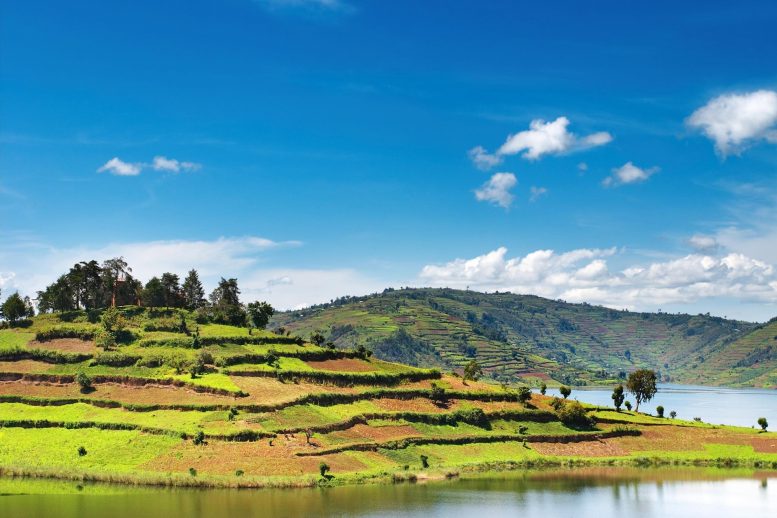
To prevent climate change from causing an additional 78 million people to face chronic hunger by 2050, there must be an increase in annual global investments in agricultural research and development.
Investments in agricultural research, water management, infrastructure can avert climate-fueled growth in hunger.
In order to prevent the impacts of climate change from pushing an additional 78 million people into chronic hunger by 2050, annual global investments in agricultural research and development will need to increase by US $2 billion (or by 120%) between 2015 and 2050, according to a new study from researchers from the International Food Policy Research Institute (IFPRI). The study provides new insights into the costs of a range of investment scenarios for climate change adaptation, drawing from complex modeling of its ecological and human impacts.
Over half of the 78 million additional people predicted to face chronic hunger by 2050 because of climate change are in Africa South of the Sahara. “Our model shows increased investments in the agriculture sector can more than compensate for climate change effects on the number of hungry people in the world. However, certain regions are more vulnerable than others, particularly Africa South of the Sahara and South Asia,” said IFPRI Senior Scientist and lead author of the study, Timothy Sulser. “Even in scenarios with no climate change, high population growth coupled with low income growth is predicted to increase rates of hunger in these regions. It will take targeted investments to reverse these trends.”
The modeling done in this study refines the most current and advanced methodologies, using the International Model for Policy Analysis of Agricultural Commodities and Trade (IMPACT) from IFPRI. It links climate, crop, water, and economic models to analyze scenarios of future change in agricultural production, consumption, prices, and trade at national, regional, and global scales. The researchers compare various scenarios, including a future without climate change, ‘favorable’ trajectories in which population growth slows and per capita income rises, less optimistic demographic trajectories, and the most severe changes to climate.
The researchers modeled the impacts and costs of investments that address several relationships between climate change and hunger: 1) investments in agricultural research and development to offset reduced crop yields from climate change; 2) investments in more efficient irrigation and water use to offset reduced water availability from climate change; and 3) investments in rural infrastructure to reduce post-harvest losses and marketing margins, improve the profitability of agriculture and increase the food supply. These models differ from previous estimates because they use more up-to-date data from the Intergovernmental Panel on Climate Change and employ recently developed methods to estimate the lagged, or long-term, impacts of investments in agricultural research and development on crop yields.
Estimated costs differ according to the impacts of the different assumptions, and the combination of the three categories of investments used. Increased global investments in agricultural research and development are found to be the most cost-effective means for offsetting increases in hunger, costing between an additional 1.49 and 2.77 billion USD annually. Offsetting higher hunger levels solely with annual investments in water efficiency or rural infrastructure would be far more costly, but these investments are also essential to complement and sustain investments in research and development, particularly in the long term. A comprehensive investment package including all three types of investments would achieve improvements across a range of outcomes in addition to hunger but increase annual costs by between 21 and 30 billion USD.
These differences in cost underline some of the implicit trade-offs between achieving different Sustainable Development Goals (SDG’s). The greatest impacts on reducing hunger specifically would come from increased investments in agricultural research and development, especially when focused in Africa South of the Sahara. Under current assumptions these investments to address SDG 2: Zero Hunger are sometimes at odds with other goals, however, such as SDG 12: Responsible Consumption and Production: Ensure sustainable consumption and production patterns. Agricultural research and development investments offer the largest reductions in hunger but smaller improvements in blue water use and irrigation supply reliability; water management investments offer greater improvements in blue water use and irrigation supply but smaller reductions in hunger.
“The alternative investment scenarios entail a wide range of costs and generate a wide range of outcomes for the SDGs,” Sulser explains. “Projections like these are never perfectly precise but they give us an idea of the costs, impacts, and trade-offs that policy-makers must consider in the coming years to adapt to climate change and prevent widespread hunger.”
Reference: “Climate change and hunger: Estimating costs of adaptation in the agrifood system” by Timothy Sulser, Keith D. Wiebe, Shahnila Dunston, Nicola Cenacchi, Alejandro Nin-Pratt, Daniel Mason-D’Croz, Richard D. Robertson, Dirk Willenbockel and Mark W. Rosegrant, June 2021, International Food Policy Research Institute: Food policy report.
DOI: 10.2499/9780896294165









Be the first to comment on "To Prevent Hunger, Climate Adaptation Requires Billions in Additional Annual Investments"